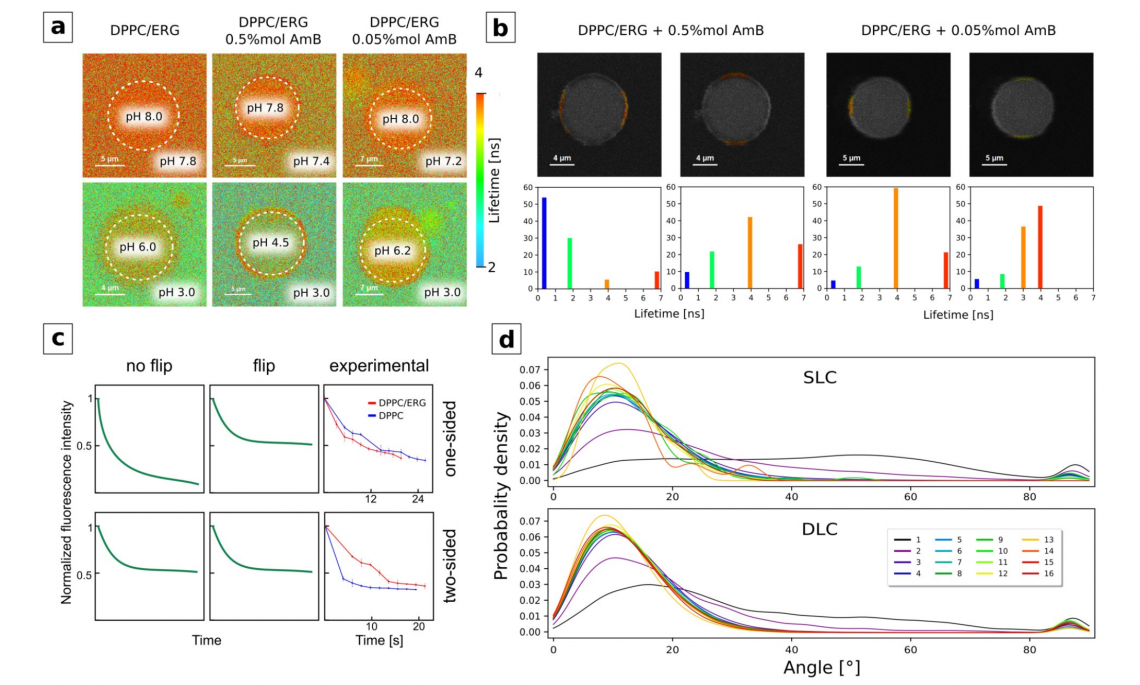
Self-assembly, stability and conductance of amphotericin B channels: bridging the gap between structure and function
Joanna Zielińska, Miłosz Wieczór, Paweł Chodnicki, Ewa Grela, Rafał Luchowski, Łukasz Nierzwicki, Tomasz Bączek, Wiesław I Gruszecki, Jacek Czub
Amphotericin B (AmB), one of the most powerful but also toxic drugs used to treat systemic mycoses, is believed to selectively permeabilize fungal cell membranes to ions in a sterol-dependent manner. Unfortunately, the structure of the biologically active AmB channels has long eluded researchers, obstructing the design of safer alternatives. Here, we investigate the structural and thermodynamic aspects of channel formation, stability, and selective ion conduction. We combine fluorescence lifetime imaging and molecular simulations to trace the process of channel assembly until the formation of stable, roughly octameric double-length channels (DLCs). This stoichiometry is confirmed by matching the predicted channel conductances with the past results of patch-clamp measurements. We then use free energy calculations to explain the effect of sterols on DLC stability and discuss the observed cation selectivity in structural terms, addressing several long-standing controversies in the context of their physiological relevance. Simulations of ion permeation indicate that only solvated ions pass through DLCs, revealing surprising solvation patterns in the channel lumen. We conclude our investigation by inspecting the role of the tail hydroxyl in the assembly of functional channels, pointing at possible origins of the cholesterol–ergosterol selectivity.
